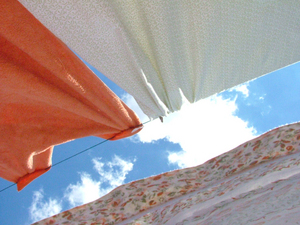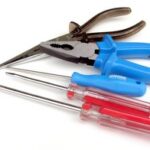If you’re looking for ways to save, consider putting up a clothesline to save a considerable amount of energy and hard-earned money. Whether you have a gas or electric clothes dryer, taking advantage of drying fabric items outdoors will slash your utility bills considerably. Clotheslines have drastically improved over the years, and there’s no better way to cut back on energy costs than by putting up a clothesline and drying fabrics outdoors.
Types of Clotheslines to Consider
Nowadays there are a number of types of clotheslines to consider, and the choices available are far more aesthetically pleasing than the standard cross-shaped metal posts of yesteryear. Clotheslines don’t have to stick out like a sore thumb in the center of your yard. There are clothesline choices that will blend into your landscape, and even if you don’t have a lot of extra space, there are clotheslines to meet every style, preference, and space.
If you don’t like the appearance of a clothesline in your yard, consider putting up a portable umbrella unit. As the name suggests, this variety opens and clothes like an umbrella, and provides an ample amount of space for hanging clothing, towels, and even bedding. This style comes with a post that is driven into the ground and capped when not in use.
A retractable clothesline is also perfect for those who don’t want the standard t-shaped variety. It provides a row of lines that can be extended and retracted when not in use. It’s a great option for those with limited space, and this variety is available in various extendable lengths and widths.
Have you considered putting up a permanent clothesline in your yard? You’ll find numerous plans for building clotheslines, and they can be designed to match outdoor planters, decks, furniture, and other furnishings. The options are truly endless and are only limited by your level of skill and imagination.
Placement
Before putting up a clothesline, choose a location that will receive plenty of sunshine and a steady breeze. Consider the usual direction of the wind so clothes won’t be whipped or twisted in unnatural directions during the drying process. This will help alleviate wrinkles and undue wear and tear.
Avoid putting your clothesline beneath electrical lines or near trees where birds could be a problem. In addition, chose an area that’s convenient to the location of your home, but away from the usual foot traffic and places where pets and children play. This will reduce the need to rewash items because of bird droppings, playful pets, dirty hands, and airborne toys.
Posts
If you opt for traditional posts when putting up a clothesline, it’s important to use treated lumber or metal so they won’t rot or quickly deteriorate. They should be set in cement approximately 3 feet below the surface of the ground for greater stability. For safety reasons, always call to locate electrical lines before digging.
When designing your own clothesline posts, the horizontal posts should be approximately three feet longer than the length of the vertical posts. Plan on allowing at least 18 inches between the lines for proper airflow and room to work. Attach strong eyehooks directly into wooden posts, and drill holes through metal posts and secure eyehooks with bolts.
Proper Height
Don’t make the mistake of placing the top of your clothesline too high. You shouldn’t have to extend your arms way above your head in order to reach the lines. When putting up a clothesline, position it so the lines are approximately 2 inches above the head of the person who will most often use it. This height will be sufficient for most items, and the person hanging and removing clothing and other fabric items won’t have to stretch and strain to reach them.



